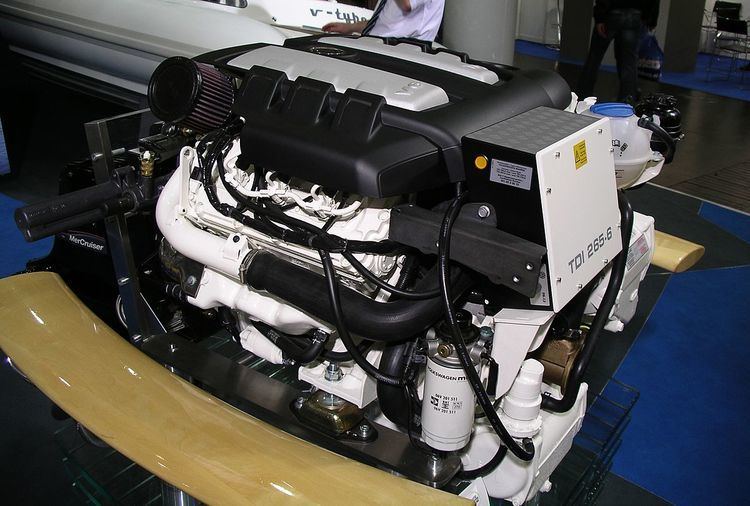 | ||
Marine automobile engines are types of automobile petrol- or diesel engines that have been specifically modified for use in the marine environment. The differences include changes made for the operating in a marine environment, safety, performance, and for regulatory requirements. The act of modifying is called 'marinisation'.
Contents
All of the "Big 3" American auto companies have had engines marinised at some point. Chrysler is notable, because the company marinised engines in-house through Chrysler Marine, as well as selling engines to third parties such as Indmar or Pleasurecraft Marine.
General Motors marine automobile engines are based on a gasoline truck engine. That means four-bolt main bearing caps instead of just two; sometimes the crankshaft is forged steel and the pistons an upgraded aluminum alloy. Most importantly the camshaft profile is different with the overlap ground to 112 degrees instead of 110. Expansion plugs are bronze to better fight corrosion. The head gasket's metal O-ring is also more corrosion resistant.
Examples of the opposite of a marinized car engine also exist, e.g. the 6,2 or 6,5 liter Detroit Diesel V8 engine found in Chevrolet and GMC utility vehicles was originally a marine engine adapted for automotive use.
